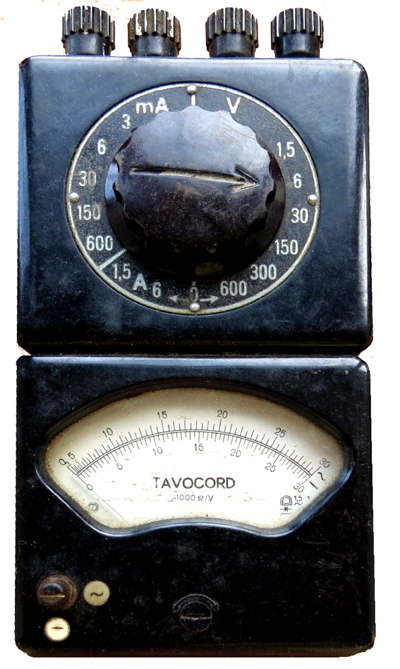
instructions on the rear for extending the range of the meter

scaleplate removed from defective meter

interior of the switch section

meter movement


instructions on the rear for extending the range of the meter

scaleplate removed from defective meter

interior of the switch section

meter movement
Ex WW2 German ohmmeter 5 ranges from 1 ohm to 10 Mohm which had been taken apart and the meter section had been converted into a 0-120 (0-120mV) meter. The resistance selection had lost two knobs but otherwise was complete. The original scale had been removed and replaced with a hand calibrated one. I had married the two parts together and after some experimentation discovered how it may have been intended to work. I made a new scale for the four lower ranges and fitted two replacement knobs. The unit takes two 1.5 volt cells which no longer seem to be available, they are shorter and larger diameter than AA cells. I don't know for sure but I imagine it came from the same souce as the E52b communications receiver also on this site.
In 2015 I purchased an identical meter which had an open circuit meter movement so I was able to use the scaleplate selector switch knob and resistor coil to put the original instrument back as manufactured.
For the low ranges the unknown resistance is connected to the black
terminals and
the left hand knob is turned clockwise until the pointer reaches the
calibration point, the right hand button is then depressed and the
reading multiplied by the appropriate constant as shown in the table
gives the resistance. For the higher ranges (in red) with the right
hand button locked in the depressed position, the meter is used in the
conventional manner, shorting the terminals and adjusting for full
scale deflection before connecting to the unknown resistance.

This is what I think is the circuit.
This is one of a range of 'Tavo' instruments made by the German firm Metrawatt in the 1940s and 1950s having similar meter movements and housed in two parts see below.


